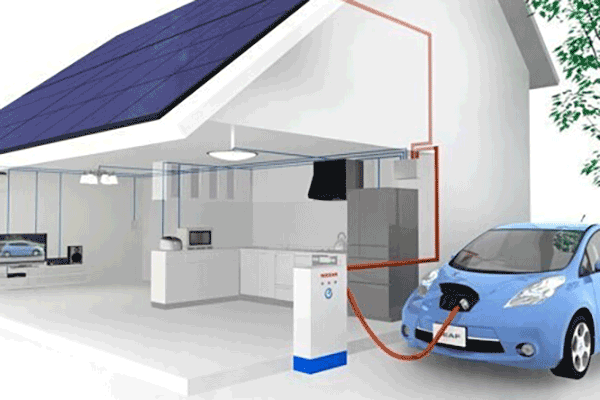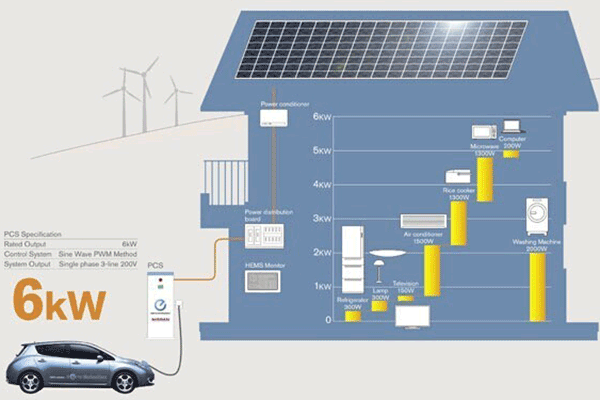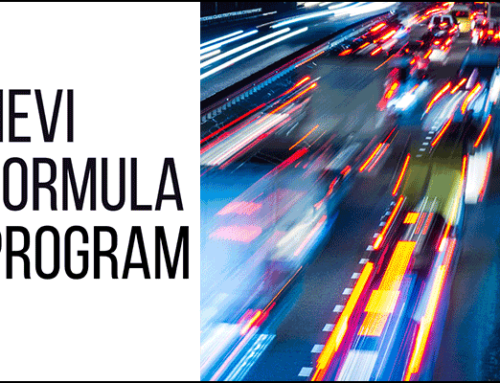Vehicle to Home power supply system, which aims to use EV technology to help power grids cope with peaks in demand, provide power during natural disasters, and make electricity from renewable sources more viable.By using the storage capacity of EVs and Vehicle to Home (V2H) systems, consumers can reduce their use of power at peak times without turning off lights and appliances. That is particularly useful in commercial establishments where it is hard to turn the power off to save electricity.
SETEC POWER has developed a corresponding solution for Nissan LEAF users based on V2H technology. The LEAF-to-Home Power System, the industry’s first backup power system, transmits electricity stored in Nissan’s LEAF high-capacity batteries to homes.

Leaf to Home can move the electricity from vehicle to home. This power transfer system enables electricity stored in high-capacity lithium-ion batteries onboard a Nissan LEAF to be sent to an ordinary home by connecting the car to the home’s electricity distribution panel with a connector linked to the LEAF’s quick charging port. The EV Power Station system is similar in size to an external air-conditioning unit, can be installed outdoors, and conforms to the CHAdeMO protocol for EV quick chargers. CHAdeMO is an abbreviation of “Charge de Move” (“charge for moving”) and is the trade name for a quick-charging method used to charge the batteries of electric vehicles. The SETEC system’s connector complies with the JEVS G 105 standard defined by the Japan Automotive Research Institute (JARI). This system can run on various operating modes and has a timer function which can be controlled with a liquid crystal display (LCD) touch panel. Electricity is stored or supplied automatically in accordance with a household’s electricity capacity and consumption.

The EV Power Station can fully charge a LEAF in as little as four hours, which is approximately half the time required when a normal charger is used. All current Nissan LEAF owners in Japan will be able to use the system, depending on their home’s installation requirements. With Japanese government subsidies taken into account, the EV Power Station is estimated to cost 330,000 yen with the consumption tax and installation charge (300,000 yen excluding tax).
This system helps to balance the electrical supply system, and can even lower a consumer’s electricity bill. The LEAF to Home system will help encourage Nissan LEAF owners to charge their cars with electricity generated during the night, when demand is low, or sourced from solar panels. This assist in balancing energy needs by supplying electricity to the grid during daytime, when demand is highest. It can also be used as back-up power source in case of power outages and/or shortages.
The lithium-ion batteries can store up to 24kWh of electricity, which is sufficient to supply an average Japanese household for about two days. This system underscores an additional attribute of EVs: vehicles which can be used as a storage battery whether they are moving or stationary.
SETEC will continue to create new value in EVs as part of the way forward toward the realization of a zero-emission society.














